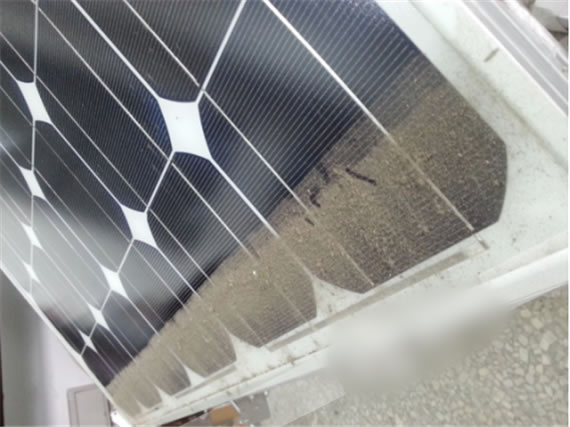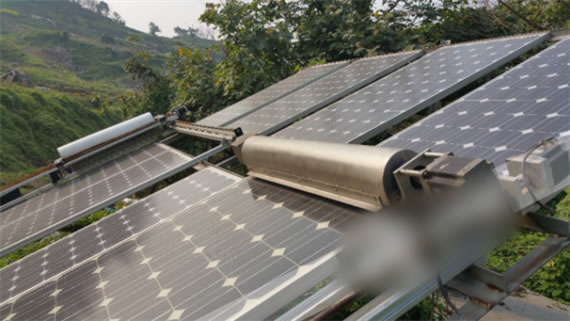 |
Foreign researchers visit the test device Chongqing University of Science and Technology

Dust removal before and after the dividing line Chongqing Institute of Technology for Hualong

Outdoor experimental testing device Chongqing Institute of Technology
In recent years, with the application of photovoltaic power generation technology on a global scale, the technical insufficiency and dilemma in photovoltaic power generation technology have also become experts to solve the problem. It is understood that in the past 10 years of engineering practice, it has been found that temperature and dust are the main environmental unfavorable factors that affect the efficiency of photovoltaic power generation. Among them, dust particles in the air cover the photovoltaic device light-receiving surface (photovoltaic glass), resulting in a decrease in the light flux of the solar cell, and a significant reduction in the power generation efficiency of the module and the entire photovoltaic system. To address this issue, the scientific research team of Chongqing University of Technology proposed a water-free photovoltaic dust removal technology solution based on photovoltaic modules. In this solution, photovoltaic power stations can be automatically "bathed."
Surface dust coverage of 1g/m2 results in a loss of efficiency of at least 25%
“According to investigations, in Gansu, Ningxia, Shaanxi, Shanxi, Qinghai, Xinjiang, and Inner Mongolia, the Loess Plateau with a little rain and the vast Gobi desert province, the photovoltaic power generation equipment installed along the highway has been in continuous use for 1 year, and there is no artificial maintenance. The rate of decline is higher than 80%, and it loses practical use value.The dust coverage covered by foreign researchers with a test surface of 1g/m2 results in an efficiency loss of at least 25%.Furthermore, dust coverage can also cause problems such as abnormal corrosion and reduced dielectric strength. Dr. Gongzheng Heng, Director of Institute of Photovoltaic New Energy Application Technology and Equipment, Chongqing University of Technology, introduced the research team of Professor Zhou Kangqu, Chongqing University of Technology, in 2014 under the support of Chongqing Science and Technology Commission application development project (photovoltaic module surface dust removal technology development cstc2014yykfB70005). Photovoltaic module dust removal technology research and development.
Dust removal equipment automatically cleans the PV modules based on values
After more than two years of research, the team, based on a comparative analysis of photovoltaic dust removal technology at home and abroad, proposed a waterless photovoltaic dust removal technology solution based on photovoltaic modules. Through the three-step mechanical action of "shovel, brush and wipe", the strong adherent pollutants (bird droppings, small insect dead bodies, decayed leaves), large particles, and fine dust particles on the surface of the photovoltaic module are respectively removed.
“When installing photovoltaic power generation components, the dust removal equipment is installed synchronously, and the dust removal is automatically performed during the use process according to the dust coverage and other values.†Gong Hengxiang said that this technology does not require the assistance of water or liquid cleaning agents, nor does it use high pressure gas blowing and other methods. Avoid the high cost caused by the use of water or detergents, and there will be no secondary pollution caused by dust drift after cleaning. The actual test shows that the primary and secondary dust removal rates of this external mechanical photovoltaic module dust removal device are respectively 60-70% and 79-90% (depending on the type of dust, there is a slight difference). After three consecutive dust removal operations, the optimum working conditions can be achieved.
It is understood that this project has published six research papers, applied for 9 national patents (two granted invention patents and four utility model patents) and signed two technical application contracts with related companies. (Zhang Hua)
Dome Head Open End Blind Rivets
Dome Head Open End Blind Rivets,Head Open End Blind Rivets,Dome Open End Blind Rivets,Dome Head Open Blind Rivets
KD METALS (JINGJIANG) CO.,LTD , https://www.toprivet.com